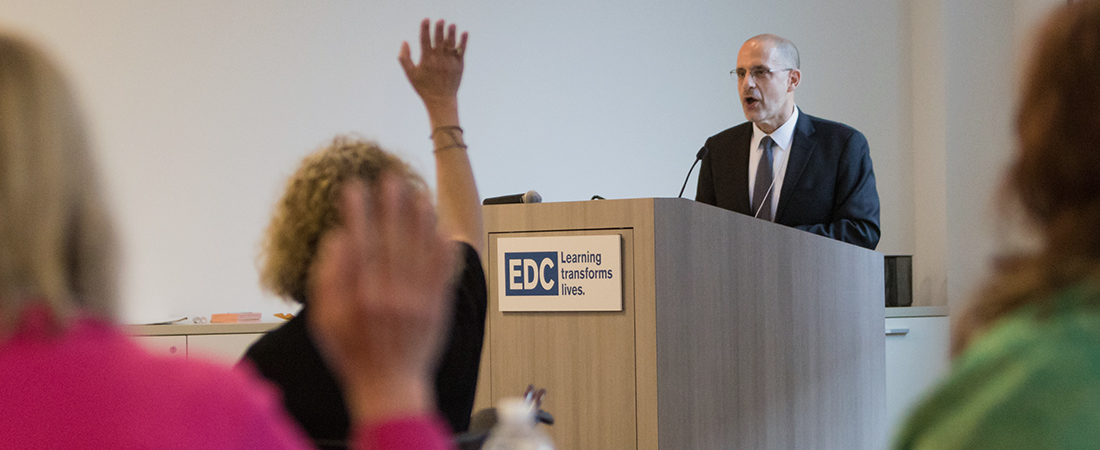How Can We Improve Early Education? Think Birth to Age 8

"We have an enormous opportunity here to improve the lives of young children," says EDC's David Jacobson.
Want to learn more about how schools and communities can work together to support young children and their families? Read David Jacobson's article, "Community Schools: A Powerful Convergence," about the powerful partnerships that can be forged.
For his first job out of college, David Jacobson moved to Oakland, California, to help Central American immigrants set up worker cooperatives. Each day, Jacobson helped janitors learn how to build businesses and share profits—skills he believed would help these individuals create better lives for themselves and their families.
It was intense, meaningful work, but it didn’t pay much. So Jacobson found a weekend job: selling children’s play structures to families in the Bay Area’s wealthy suburbs.
The disparities in opportunity between the two communities he was working in wasn’t lost on Jacobson. And while he was confident that his work with immigrant adults would promote their short-term financial security, he came to realize that growing up with little access to quality educational, health, and wellness services had already put these adults at a disadvantage.
“It was during that time that I realized workforce development for adults with low incomes was only part of the answer,” he recalls. “If we wanted to fundamentally improve their lives, we had to start much earlier.”
Jacobson left Oakland to go to graduate school and eventually began working as a consultant for school districts across the country, where he continued to see similar disparities. In communities with no access to high-quality health and early educational services, children exhibited significant achievement gaps from the moment they entered school. And once they were behind, catching up was very difficult.
“I worked with schools that were doing everything they could to address these issues in kindergarten and first grade, but it was really clear that many kids were already way behind,” he says.
Jacobson came to believe that raising academic achievement for at-risk children required much more than a good school. It necessitated the integration of comprehensive health, education, and social services, beginning before birth and continuing through age eight. He resolved to help more communities create these prenatal through grade three—“P-3” for short—services so that all children could enjoy a healthy start to life.
And for the past decade, he’s done just that.
Currently at EDC, Jacobson is developing Connect for Children, a new initiative that will offer guidance on creating and implementing P-3 systems. The effort will align and improve health, education, and social services for tens of thousands of families.
Jacobson points to Greater Omaha, Nebraska, as an example of how the P-3 model can improve outcomes for families with young children. In addition to a full teaching staff, 12 elementary schools in Omaha also have home visitors and family facilitators who support families living in the district. The home visitor supports infants and toddlers and their families, serves as a liaison to preventative medical services, and organizes child-parent interaction groups. The family facilitator helps families with transitions into preschool and elementary school and connects them to community resources, including food banks and social services. The initiative also provides supports for high-quality teaching and learning from preschool through grade 3.
“What’s fantastic about Omaha is that these parent supports are all based in the actual elementary school that children will attend,” says Jacobson. “The school itself has become a hub, and the district is building good relationships with families, helping them to access support services that will prepare their children for school.”
As interest in P-3 spreads, Jacobson is optimistic about the future of early education—and the possibility that communities can disrupt negative cycles of poverty, poor health, and academic achievement gaps.
“We have all kinds of momentum in the field of early childhood,” he says. “Educators and policymakers are both paying a great deal of attention to this critical period. We have an enormous opportunity here to improve the lives of young children and their families.”
